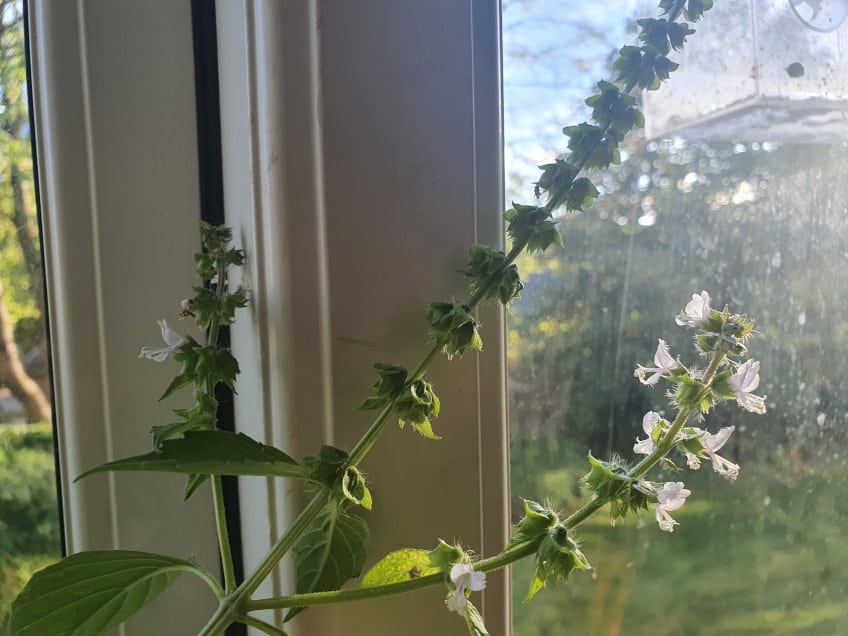
Harvesting seeds from basil is really easy and something I often do since it is an easy way to grow a lot more basil for free.
Before you start harvesting your seeds, though, it is crucial that you know with certainty that they are fully developed and ready to be harvested. If you aren’t sure, I explain how to know just below.
Here are the steps to easily harvest seeds from your basil plants:
- Stop harvesting or pruning once your basil begins to flower
- Wait for the flowers to bloom and dry out
- Cut the flowers off once they are dry
- Place the flowers in a warm and dry place
- Wait 1-2 weeks for the flower to fully dry
- Gently remove the dry seeds from the flowers
- Store the seeds in a dry and dark place
Instead of gently removing all the seeds (step 6), I have a much faster way if you are okay with being a bit less gentle.
I recommend that you place the dry flowers inside a bag while holding onto them and shaking them. This will make most of the seeds fall off into the bag. I usually do it that way instead of carefully removing the seeds one by one since it is much faster although some of the seeds might not fall off the flowers. You can just pick those off afterward if you want.
If you don’t harvest the seeds in time, they can drop off the plant and sow themselves, although they won’t regrow in areas that experience frost. You can read more about that on this link.
It is crucial that the seeds are fully developed and ready to be harvested before you do so or they won’t germinate. Luckily it is not that complicated to know. I will explain how now
How to Know When Basil Seeds Are Ready to Be Harvested
I like to remove the flowers entirely from my basil plants when I harvest seeds. It makes it a lot easier than if the flower was still attached to the plant. Before you cut the flowers off the plants, however, you need to be certain that the seeds are fully developed and ready to be harvested.
The easiest way to be sure that it is fine to cut the flowers off is to wait for them to turn brown and dry. Don’t cut them off when they are still green or the seeds most likely won’t be fully developed. If your basil flowers look like mine in the photo below, they are close but not quite ready yet.

If your goal is to harvest seeds from your basil plants, you should, of course, let them flower since that is how the seeds are developed. The flowers also attract beneficial insects to your garden that can help pollinate your other plants.
If you know how to do it correctly, you can actually also remove the flowers from your basil plants to keep them in the growing and production stage for longer. I explain how to do that on this link. If the flowers look like mine in the photo above, it might be too late, but if they are just starting to form, this is a great way to get more leaves out of your basil plant, although it delays seed production.
How to Store Basil Seeds for as Long as Possible
After you have harvested seeds from your basil plants, you should know how to store them correctly since incorrect storage will damage them and correct storage can make them last for years.
The best way to store basil seeds is to keep them in a dry, dark, and relatively cold (although not freezing) place.
I usually use a small paper bag or envelope to store my seeds, but Tupperware or other similar containers also work well. It is crucial that the seeds stay dry since moisture can damage them.
According to Johnny’s Selected Seeds, basil seeds can last for about 3-5 years if stored correctly.
Now that you know how to correctly harvest and store your basil seeds, I recommend that you head over to the article on this link, where I share some tips for sowing them.
Read My Complete Guide to Growing and Caring for Basil
I have written a thorough guide where I cover all parts of growing your own basil including choosing a variety, sowing the seeds, the best growing conditions, pruning, propagation, harvesting, storing, solving various problems, and a lot more. You can find the article on this link.

